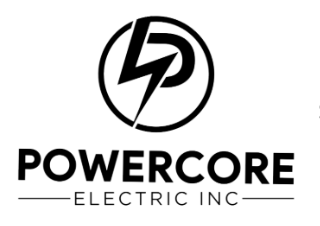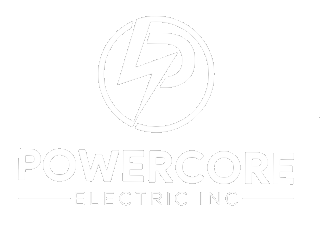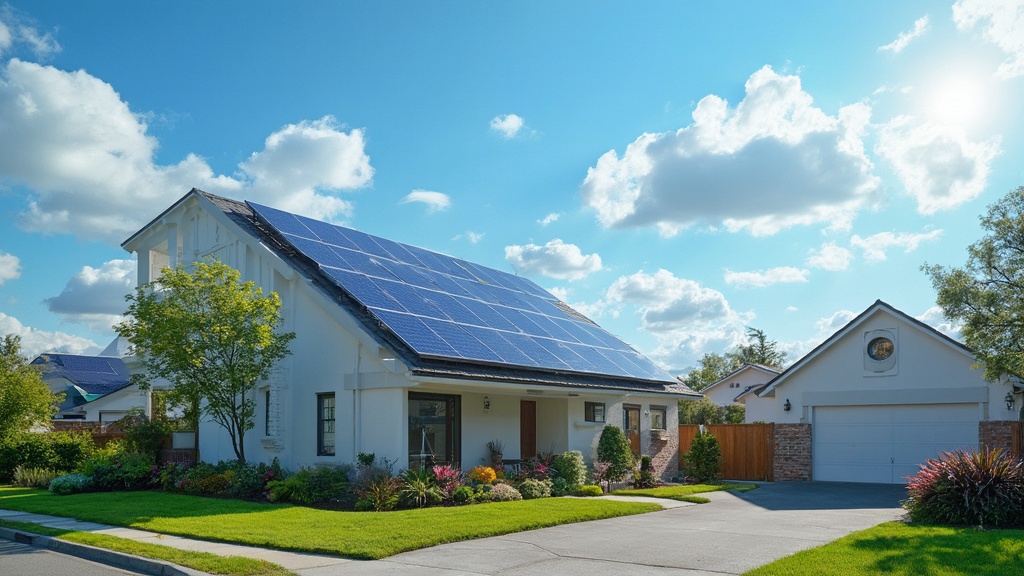Introduction
As the world shifts towards more sustainable energy solutions, solar energy systems have emerged as a popular choice for homeowners looking to harness the sun’s power. With an array of components working in harmony— from solar panels that capture sunlight to inverters that convert it into usable electricity—understanding how these systems function can empower homeowners to make informed decisions. Not only do solar installations promise significant financial savings and environmental benefits, but they also enhance property value and energy independence.
As interest in solar energy continues to grow, exploring the various incentives, installation processes, and long-term maintenance strategies becomes essential for anyone considering this eco-friendly investment. Dive into the world of solar energy and discover how it can transform both homes and the planet for the better.
Introduction to Solar Energy Systems: Components and Functionality
Solar power setups consist of various crucial elements that collaborate to capture the sun’s power efficiently. Here’s a friendly breakdown:
-
Photovoltaic Panels: These are the heart of your energy system, capturing sunlight and converting it into electricity. Piotr Bojek, a lead author on photovoltaic technology, emphasizes this innovation’s rapid progress, observing,
Over the last decade, the quantity of PV installed globally has surged significantly while its expenses have dropped sharply.
This means you can enjoy cleaner energy without breaking the bank, significantly reducing your utility costs and enhancing your energy independence! Comprehending how photovoltaic systems function is essential; they employ photovoltaic cells to transform sunlight into direct current (DC) electricity, which is subsequently converted into alternating current (AC) electricity by inverters for use in your home.
-
Inverters: Consider inverters as the translators of your photovoltaic system. They transform the direct current (DC) electricity produced by the units into alternating current (AC) electricity, which is what your home appliances utilize. Recent advancements in inverter technology have made them more efficient and reliable, allowing homeowners to maximize their power usage.
-
Mounting Systems: These sturdy structures secure your panels to your roof or the ground, ensuring they stay in place through wind and weather. A well-installed mounting system is essential for both safety and optimal energy performance.
-
Batteries: While optional, batteries act as your energy system’s safety net. They store surplus power generated during sunny days for use when the sun isn’t shining, providing peace of mind and autonomy. The top batteries, including lithium-ion varieties, provide high efficiency, extended lifespan, and quicker charging times, making them perfect for homeowners aiming to optimize their storage. This is particularly vital during power interruptions or unfavorable weather situations, guaranteeing you have dependable power whenever required.
-
Monitoring Tools: Observing your photovoltaic setup’s performance is important. Monitoring tools measure how much power your panels generate and assist in quickly identifying any problems, ensuring your setup functions at optimal efficiency.
By comprehending these elements, you can more fully appreciate the complexities of solar system services and the advantages they provide to your residence. With installations expected to stay consistent between 40-45 GW each year for the next five years, it’s an exciting time to explore renewable solutions! Furthermore, being knowledgeable about the Solar REC (SREC) markets can assist you in understanding the regulatory landscape impacting renewable systems, guaranteeing you make informed choices.
Moreover, challenges in utility-scale photovoltaic deployment, such as permitting delays and grid integration issues, emphasize the significance of streamlined processes for effective implementation, which ultimately benefits homeowners seeking to adopt renewable sources.
Navigating the Solar Installation Process: Costs, Efficiency, and Maintenance
Navigating the installation process can feel a bit daunting, but breaking it down into manageable steps makes it much easier. Here’s a friendly guide to what you can expect:
- Consultation: This is where the journey begins! You’ll discuss your energy requirements and undergo a comprehensive assessment of your property to determine how renewable energy can benefit you.
- Design: After the consultation, the enjoyable segment occurs—developing a personalized energy solution tailored just for your home. This ensures you get the most out of your investment.
- Permitting: Next up is obtaining the necessary permits from local authorities. Don’t worry; this is a standard procedure that your installer will typically handle for you.
- Installation: Here comes the exciting part—professional installation of your energy panels, components, and even a Tesla home charger if you’re looking to further enhance your eco-friendly setup. Observing your celestial arrangement come to life is tremendously gratifying!
- Inspection: After installation, everything will be inspected to ensure compliance with local codes and standards, ensuring safety and efficiency.
- Activation: Finally, it’s time to activate your photovoltaic setup and start generating clean energy!
Now, let’s talk about costs. Typically, installing a photovoltaic setup can vary from $15,000 to $25,000. However, the average 25-year savings from solar in Wyoming is approximately $5,916, which highlights the substantial financial benefits of this investment.
Don’t forget about those sweet incentives from government programs that can significantly reduce your final cost! When discussing efficiency, most setups function at approximately 15% to 20%, which can result in significant resource savings over time and sustainability.
Additionally, net energy metering can enable you to receive credits for excess energy your setup generates, further enhancing your savings. Regular solar system services are also recommended to keep your system running optimally, ensuring longevity and peak performance. Consider exploring premier solar system services to enhance your investment in renewable energy.
Battery options are another important factor to consider, as they can provide backup power and enhance your power independence.
As emphasized in the case study titled “Investment Value of Solar Panels,” investing in these panels can reduce energy expenses, enhance property worth, and promote environmental sustainability. As Faith Foushee wisely points out, the most accurate way to determine how much money you can save with renewable energy is by getting a quote from a reputable installer. Taking this step can help you fully understand the financial advantages of utilizing renewable energy and make a well-informed decision.
Moreover, examining the advantages and disadvantages of photovoltaic shingles can offer you more understanding of your choices.
The Benefits of Going Solar: Financial Savings and Environmental Impact
Transitioning to renewable power offers a range of remarkable advantages that render it an attractive option for environmentally aware homeowners. Here’s a closer look at some of the key advantages:
-
Financial Savings: Imagine slashing your electricity bills while also investing in your home! Many homeowners find they can recover their initial investment in photovoltaic panels within just 5 to 10 years, leading to significant long-term savings.
With the global manufacturing capacity of photovoltaic technology projected to reach nearly 1,000 GW in 2024, this form of power is becoming both more accessible and economically viable.
-
Tax Incentives: Who doesn’t love a good tax break? Federal and state tax credits can significantly reduce installation costs, making renewable energy even more affordable. Numerous property owners are leveraging these incentives, including government initiatives like the Federal Investment Tax Credit (ITC) that promotes renewable adoption, to invest in cleaner alternatives without straining their finances.
-
Increased Home Value: Did you know that installing photovoltaic panels can actually enhance your property’s value? Homes with renewable energy systems are often more appealing to buyers, which can result in a higher selling price later on. This renders renewable power not only a practical option but also a wise financial commitment.
-
Environmental Impact: By selecting this alternative source, you’re not only saving money but also contributing to the planet. A typical vehicle emits 4.6 metric tons of carbon dioxide every year, underscoring the importance of reducing reliance on fossil fuels. Solar power generation reduces greenhouse gas emissions and encourages sustainability, creating a substantial positive effect on the environment. Keep in mind, the majority of renewable energy setups will endure over 30 years, generating even greater savings in the long term.
-
How Photovoltaic Modules Operate: Photovoltaic modules transform sunlight into electricity utilizing photovoltaic cells. When sunlight hits these cells, it generates direct current (DC) electricity, which is then converted into alternating current (AC) electricity by an inverter, making it usable for your home.
-
Cleaning and Maintenance: Regular cleaning of panels is essential to maintain their efficiency. Professional cleaning services ensure that dirt, debris, and other obstructions are removed, allowing your energy system to operate at its peak performance.
These compelling benefits make transitioning to solar system services a savvy choice for homeowners who want to create a positive impact on both their wallets and the environment. As we observe homeowners in locations such as Australia adopting renewable technologies and solar system services to reduce utility expenses, it’s evident that the trend is increasing, further backed by leading companies throughout the USA providing varied solutions like Tesla home chargers, efficient battery options, and professional cleaning services.
Exploring Solar Incentives and Programs for Homeowners
As you contemplate transitioning to renewable power, it’s crucial to grasp the financial incentives that can greatly reduce your cost burden. Here’s a friendly rundown of the key programs available:
- Federal Solar Tax Credit: You can claim a generous 30% of your installation costs on your federal tax return, making it a fantastic way to save money while investing in clean energy.
- State Rebates: In California, homeowners can take advantage of varying rebates for installations, enhancing your savings further. Each state has its own framework, so it’s advantageous to review the details for your region.
- Net Metering: This advantageous program allows homeowners to sell any surplus power they produce back to the grid, effectively reducing your utility costs and potentially earning you some extra income!
- Local Programs: Many utility companies also offer further incentives, such as low-interest loans or grants, to assist with renewable energy installations in your community.
Additionally, keep in mind the possible penalties; for instance, a 20% penalty may apply if excess payments are requested and made by the IRS, which could affect your overall savings. Furthermore, the total reduced tax liability for 2025 from depreciation deductions and the Production Tax Credit (PTC) is projected to be $133,290, highlighting the substantial financial benefits of renewable energy investments.
By taking the time to research and understand these valuable programs, you can maximize your renewable energy investment and significantly reduce your overall costs. Remember, over 1.2 million American households have claimed more than $6 billion in credits for residential clean power investments, averaging around $5,000 per household, according to Matthew Ashenfarb, a Research Economist with the Office of Climate & Economics. This is an excellent moment to think about incorporating renewable power solutions, including battery storage and roofing enhancements, to safeguard your home sustainably through solar system services provided by Powercore Electric.
For Long Beach renters, exploring options for community renewable energy programs can also provide access to clean energy without the need for installation on your property. For individuals exploring commercial renewable energy alternatives, enterprises with photovoltaic (PV) installations activated between January 1, 2018, and December 31, 2022, may choose to assert a 100% bonus depreciation, which also appeals to environmentally-aware homeowners. Now’s the perfect time to join the energy movement!
Ensuring Long-Term Success: Monitoring and Support for Solar Systems
To ensure your solar setup thrives for years to come, keep the following best practices in mind:
- Understanding Solar Panel Functionality: Solar panels convert sunlight into electricity through photovoltaic cells. The power produced can either be utilized right away or stored in batteries for future use. Grasping this procedure is vital for enhancing your setup’s efficiency.
- Optimal Battery Choices: Regarding power storage, choosing the appropriate battery is important. Lithium-ion batteries are popular for their efficiency and longevity, while lead-acid batteries may be more cost-effective but have a shorter lifespan. It’s essential to select a battery that matches your power requirements and financial plan.
- Regular Monitoring: Utilize monitoring tools that offer real-time insights into your power generation and performance. This proactive approach enables you to promptly identify and resolve any issues, offering peace of mind. As emphasized by Ben Zientara, a respected energy policy analyst, comprehending and sustaining your setup is vital for enjoying its long-term advantages.
- Scheduled Maintenance: Make it a habit to arrange yearly evaluations. These check-ups can reveal possible issues before they worsen, ensuring your setup operates seamlessly and effectively.
- Stay Informed: Technology is constantly advancing, and so are the rewards available for renewable sources. Staying updated on the latest advancements ensures you can take advantage of any benefits that may enhance your system.
- Customer Support: Opt for a provider that prioritizes ongoing support. Powercore Electric Inc. provides extensive services, including photovoltaic panel installations, battery backups, and EV charging stations, ensuring you have access to expert support for any questions or issues.
The increasing awareness of the significance of monitoring tools is clear, as organizations like FEMP promote federal agencies to enroll in monitoring services that report energy delivery and performance metrics. By incorporating proactive monitoring and robust support, homeowners can not only maximize their system’s efficiency but also significantly extend its lifespan. For instance, solar monitoring software offers users real-time production information and historical data access, allowing users to track performance over time and ensure that any issues are swiftly diagnosed and resolved.
Conclusion
Embracing solar energy is not just an investment in your home, but a commitment to a sustainable future. By understanding the key components of solar energy systems—from solar panels and inverters to batteries and monitoring systems—homeowners can make informed decisions that lead to significant financial savings and environmental benefits. With the right knowledge, navigating the installation process can be a seamless experience, paving the way for a cleaner, more energy-independent lifestyle.
The advantages of going solar extend beyond just cost savings. With enticing tax incentives, increased property value, and a positive impact on the environment, the decision to switch to solar energy becomes a compelling choice for many. As more families take advantage of these benefits, the growing trend of solar adoption highlights the importance of staying informed about available programs and support options.
Ultimately, the journey to solar energy is not just about harnessing the sun’s power; it’s about creating a brighter, more sustainable future for everyone. By investing in solar, homeowners can contribute to a healthier planet while enjoying the financial rewards of reduced energy costs. Now is the perfect time to explore solar solutions and join the movement towards a greener tomorrow.


